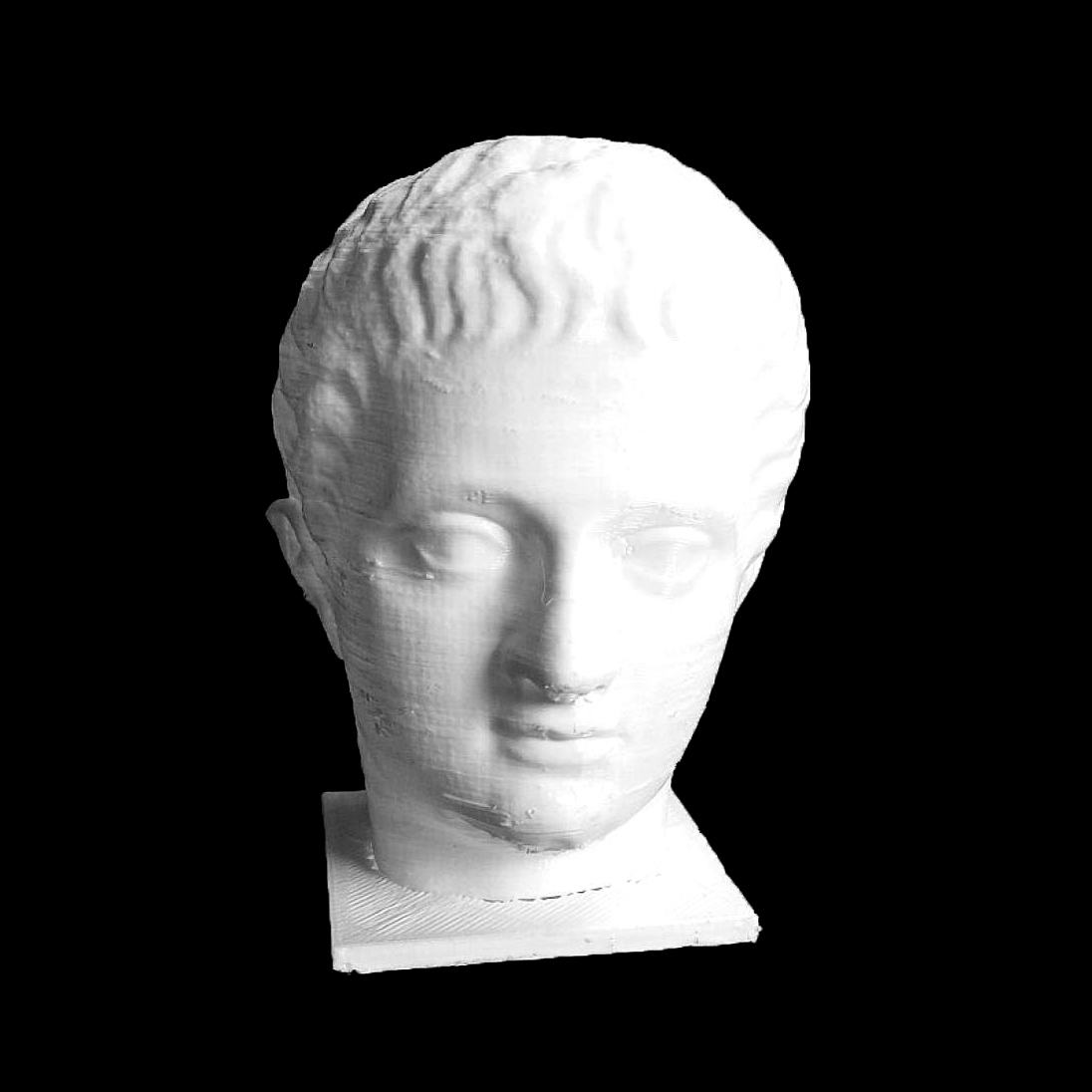
Head of Germanicus
myminifactory
The model for this bust has proven difficult to identify. The hairstyle does not match those of Augustus, whose drooping eyebrows more closely framed the eyes. Nor does the portrait resemble those of any of Augustus’s grandchildren: Caius, Lucius Caesar, and Agrippa Postumus. Clearly executed after Caius’s death in 4 A.D., the face represented can therefore only be that of Germanicus, Livia’s grandson, who married Agrippina the Elder, Augustus’s granddaughter, in 5 A.D. Between his adoption by his uncle Tiberius in 4 A.D. and the death of Augustus ten years later, Germanicus frequently accompanied Augustus on military campaigns. During this period, portraits like this one proliferated. The piece can be dated to this time, between 8 and 10 A.D. (as can the heads in the British Museum 1883 and 1884, the Munich Residenz, and the Louvre Ma 3135). Cast aside by Tiberius after 14 A.D., Germanicus would only begin to be represented again, posthumously, as of 19 A.D. Three hairstyle types are granted to Germanicus; the “Béziers,” “Gabii,” and “Corinto-Stoccarda” types. K. Fittschen has pointed out the similarities between the “Corinto-Stoccarda” capillary features and certain hairstyles worn by Tiberius, Caligula, and Claudius, which would make the “Corinto-Stoccarda” a posthumous type just like the “Gabii” type.1 But this concurrence seems unlikely, since another type, the “Béziers” type, is still evident in 23 A.D. Therefore Fittschen determined that portraits of the “Corinto-Stoccarda” type are not in fact of Germanicus. The Louvre’s new acquisition thus reinforces a type that poses a fundamental problem in the chronology of portraits of Germanicus. In its current state, this male head appears as a mask consisting simply of the face and the front of the neck. The back of the sculpture was cut away on three planes: a vertical or occipital plane, a nearly horizontal or summit plane, and an oblique or right temporal plane. Beneath the Adam’s apple, the neck has been broken along three lines. Traces of polychromy have survived in the hair, particularly in the hollows of the locks on the right side of the head and above the left eye. The polychromy consists of a calcium carbonate mixed with red ochre, typical of mineral pigments. Traces of paint on the eyes were observed during the restoration. Roman-era heads originally constructed out of several pieces are quite an enigma. The hair, lips, eyes, and clothing were most often given a coat of paint to conceal joints and fillings, offsetting any aesthetic drawback of making the heads out of several pieces. The technique was the result of economic, social, and technical factors: sculptors, mostly Greek artisans both poorly paid and ill-considered in Rome, found the cost of raw materials too high to be able to abandon large pieces of marble. It is also likely that in an attempt to divide labor, actual portraits were sculpted by a specialist, while the hair was made by a younger or less talented workman from one or two pieces already added to the head. An unsuccessful portrait was therefore not of any great consequence. It has been suggested that this portrait could be of the velato capite type known to include two portraits of Germanicus. Yet here the bond lines are not symmetrical: the line above the left temple does not correspond to the one on the right. Joined surfaces were crafted in a different manner. Originally, the top of the skull was set on a join bed studded with small recesses. Following an accident, the back of the head had to be planed down to attach a piece with a mortise; the top of the skull, now loose, was reattached with the same system. A shock to the right temple probably required the attachment of a third element, which was simply glued, possibly in the modern era. This second accident probably caused the irregular break around the neck. A third mishap may have led to the head being abandoned and, later, to all the additions being removed.
With this file you will be able to print Head of Germanicus with your 3D printer. Click on the button and save the file on your computer to work, edit or customize your design. You can also find more 3D designs for printers on Head of Germanicus.
